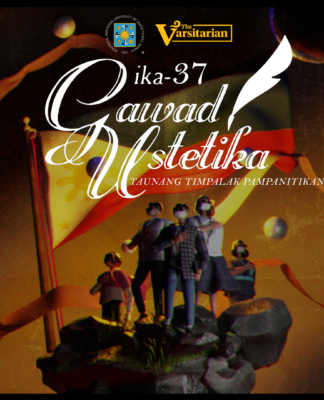THREE years after Nick Joaquin donated his personal library to the University, his memory and legacy endure as Esquinita de Quijano de Manila, a reading corner at the Miguel de Benavides Library dedicated to the late National Artist for Literature, was inaugurated last November 13.
Named after the writer’s famous nom de plume, the Esquinita was a brainchild of Joselito Zulueta, Varsitarian’s publication adviser. It alludes to Joaquin’s legendary peregrinations, literally and literarily, along the streets of the “Ever Loyal and Noble City of Manila.” The Esquinita can be found at the Humanities section on the fifth floor of the Miguel de Benavides Library.
“It was a long process,” Fr. Angel Aparicio, Prefect of Libraries, told the Varsitarian about putting up the reading corner. “Cataloguing 3,000 books is not an easy task.”
Heeding their uncle’s wish that his books be donated to UST upon his death in 2004, Joaquin’s nephews, Eduardo Joaquin and Bing Villegas did so and requested a program to be arranged to formally complete the National Artist’s last will. Several activities have been conducted since his death to honor the writer, including an exhibit, “The Life and Works of Nick Joaquin,” organized at the library during his first death anniversary in 2005.
In the inauguration of the Esquinita, Acting Rector Fr. Rolando De la Rosa, O.P. paid tribute to Joaquin. There were performances from the UST Liturgikon and soprano Thea Perez. Veteran stage actress Naty Crame-Rogers, who played Paula in the original stage version and the 1968 film adaptation of Joaquin’s A Portrait of the Artist as Filipino, generally considered the finest Philippine drama in English, performed excerpts from the play. Young poet Angelo Suarez also did an unorthodox reading of Joaquin’s “Verde” poem.
The reading corner has a dedicatory memorial and a resin-glass art work made by Fine Arts professor Noel Rivera, son of the late Cenon Rivera, another Thomasian artist-teacher famous for his stained-glass work.
“The resin-glass images represent the blending of the Filipino and Spanish cultures which is the subject of much of Nick Joaquin’s work,” Father Aparicio said.
One of the images shows Joaquin writing, with an inconspicuous beer on his desk, which, as De la Rosa said in his opening remarks, is often associated with the artist. It also has Joaquin’s National Artist medallion.
“He had always been a devotee of Our Lady of La Naval. He donated his National Artist medallion to her,” Aparicio said.
The second image shows Joaquin’s famous protagonist, Connie Escobar, from his acclaimed novel, The Woman Who Had Two Navels.
“Joaquin says that Filipino identity is made of two navels, like the woman with two navels, meaning the Hispanic influence and the native soul. We wanted to portray that,” Aparicio said.
Joaquin received an Associate in Arts degree from UST. He entered the St. Albert College in Hong Kong and became a Dominican seminarian for a while, but left in 1950 to pursue a writing career. In 1976, he was named Natonal Artist. In 1996, he received the Ramon Magsaysay Award for Literature, Journalism, and Creative Communication.
“We were favored by Nick Joaquin because of his closeness to the Dominicans,” Aparicio said. “We have the memory of a great writer and that is what is important for us. Having his library and the books that have inspired him is really very relevant for the students.”















